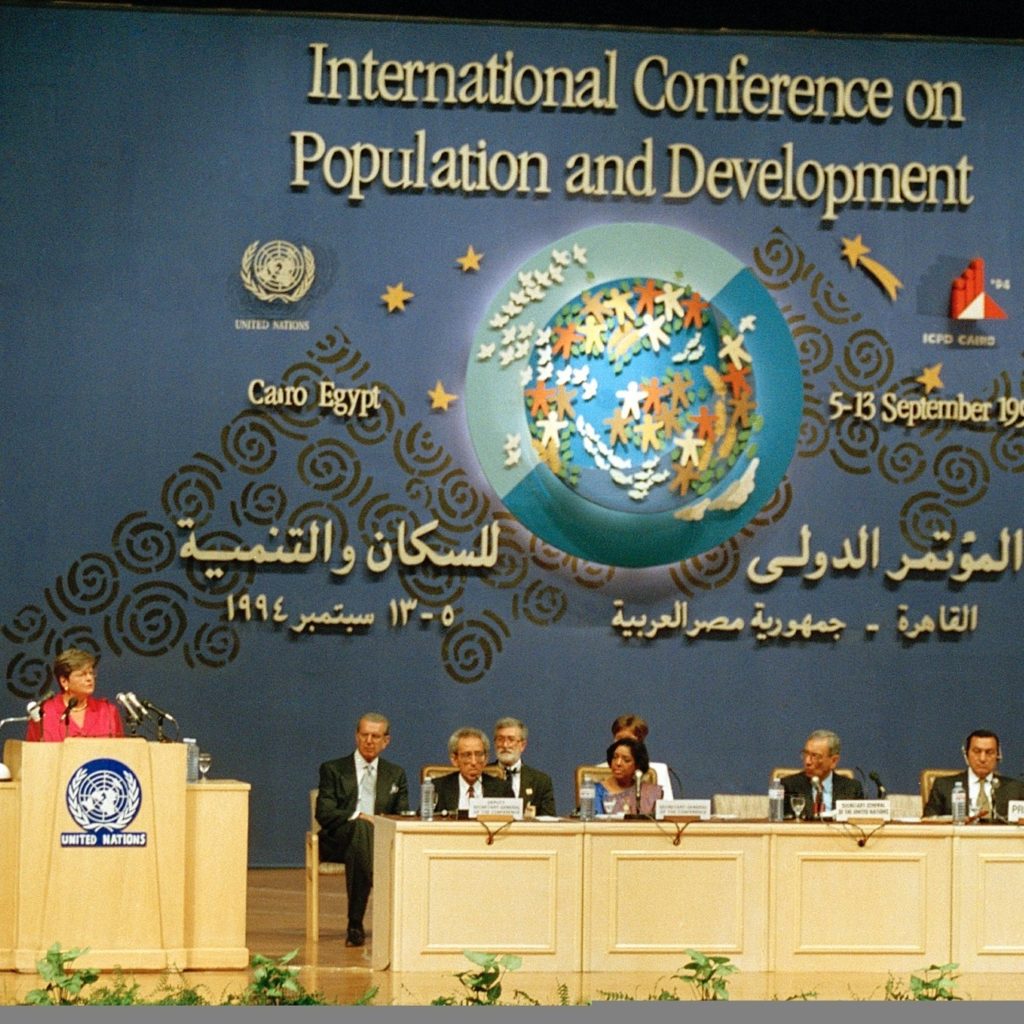
Twenty-five years ago I was in hot Cairo, Egypt for the United Nations International Conference on Population and Development. It changed the direction the world has taken and also was life-changing for me.
There were thousands of people at ICPD and many simultaneous events. It was exciting to be among people from all over the world who were concerned about the subject that had caught my attention 3 decades before—human population.
One of the experiences I remember best was sitting in a sweltering room waiting for my conference pass. The Durango Herald had provided three of us from Durango with journalist credentials, but we needed UN sanctioned passes. Sitting and sweating to my left was a journalist from Cameroon. I offered my water bottle to him and struck up a conversation.
“Why are you concerned about population?†he asked. I told him that I had 2 children and a vasectomy. He said he had 3 young kids and wasn’t sure what the future would bring. I answered that all children should have those advantages a small family can bring, including a good education.
The ICPD moved interest away from population and toward reproductive health. Pushback against incentives, where people were given money or gifts if they agreed to be sterilized, motivated this change. Some countries, most notably India and China, had demographic goals so family planning workers were given quotas. As a result people were coerced into using contraceptive methods that weren’t suitable, were sterilized without understanding that they couldn’t bear children, or were forced to have abortions.
The fact that Earth’s population was not sustainable was seldom discussed at ICPD. In the quarter century since we have grown by 2 billion people and the world is even more overpopulated.
There is good news, however. At the ICPD25 Summit that just ended in Nairobi, Kenya, people celebrated the improvements in the past 25 years. Among notable achievements is the doubling of the number of women in the least-developed countries who use modern contraception. Furthermore, the worldwide maternal mortality rate has dropped by 40%–partly because of the increased usage of birth control, and partly because more than 3/4 births worldwide are attended by trained people. These improvements have required huge efforts. For instance, FP2020, the largest international effort ever to distribute family planning information and access, has reached millions of women and couples in many of the poorest areas in the world.
The global population growth rate has declined over the past 50 years. The peak was in 1970, when world population increased by more than 2% annually, but now it is just 1%. However, we are still growing: the net growth is about 80 million each year.
The Nairobi Summit recognized that there are still unattained reproductive goals. Every day 830 women die from pregnancy, 33,000 girls are forced into child marriage and 11,000 girls undergo female genital mutilation. The Summit focused on several areas, including universal access to sexual and reproductive health and rights, and ending gender-based violence and harmful practices.
They also recognized the importance of providing funding for these services. The money necessary to save the dignity and lives of so many people is estimated at $264 billion over 10 years. Although a huge sum, it equals the combined wealth of the 3 richest people in the USA, or what the US military spends in 3 months.
After Cairo I realized that helping women in my medical practice was not enough. John Byrd, who also attended the ICPD, Fort Lewis College professor Don Gordon and I banded together to brainstorm ways to alert people to problems of overpopulation. We observed World Population Awareness Week with speakers, then taught an online class at the College, and ended up with a face-to-face class. Bio141, People and the Planet, was popular for several years.
After writing “The Gynecologist’s Column†for Women’s World, I recognized that I could reach more people as an author than in the exam room or classroom. I approached Morley Ballantine, then Herald editor. who suggested writing a column. In addition, she gave me an unusual gift by allowing me to own the copyrights. Various of these Herald essays have also been republished in other media, and they are emailed to over 300 people in several countries.
The ICPD has improved the lives of many people throughout the world. In addition, it motivated me to become more of an activist, including writing the Population Matters! column you are now reading.
©Richard Grossman MD, 2019